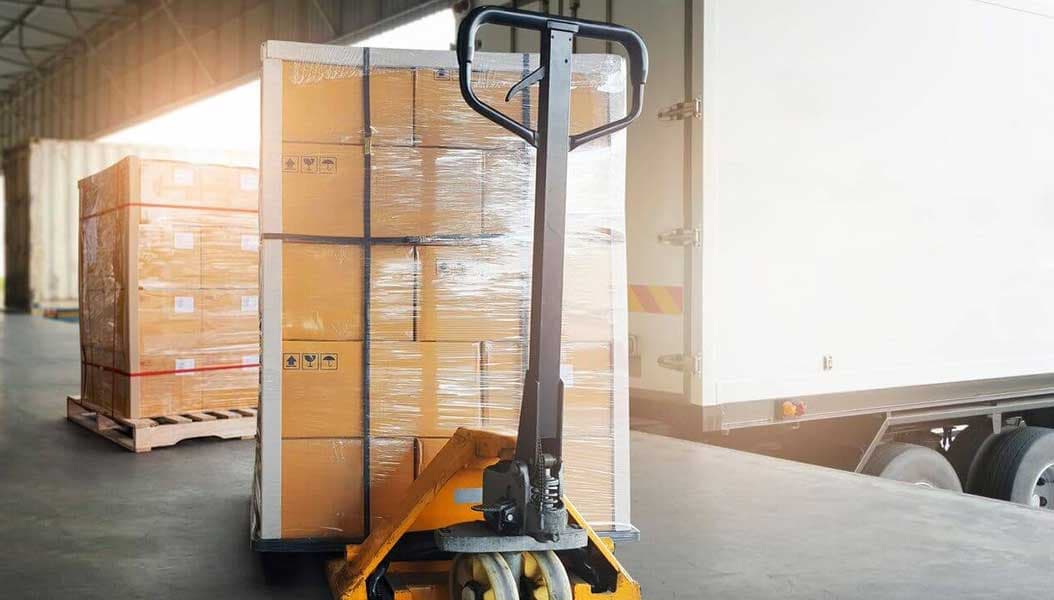Consolidated freight costs are a crucial consideration for businesses that need a cheap shipping option. One challenge of consolidated shipping is making sure that cargo from different shipments can be transported together without causing damage or delays. With proper planning, combining shipments can be a smart solution for businesses of all sizes looking to streamline their supply chain operations.
According to the Supply Chain Management Review (SCMR), consolidated freight costs make transporting numerous less-than-truckload (LTL) shipments cheaper. Freight consolidation is a service that combines different loads together. This approach lets multiple shippers share trailer space and reduce their transportation costs.
Our goal at Transload Services USA is to help shippers understand consolidated freight costs when looking for the best transportation options.
What Are Consolidated Freight Costs?
Consolidated freight costs refer to the money that shippers will have to pay when they combine multiple LTL shipments into one full truckload. There are many benefits of consolidating freight that shippers will be able to enjoy.
Most freight consolidation companies offer benefits such as:
- Cost savings
- Improved supply chain management
- Contributing to a more sustainable environment
While there are many benefits of consolidated shipping, it’s important to note that combining shipments may not always be suitable. Consolidated freight can take longer to arrive at the final destination than other shipping options.
Transportation companies need to combine multiple shipments into one at their consolidation center. This process can take a considerable amount of time.
Another potential drawback is that businesses may have less control over their shipments with consolidated freight. When considering whether to use consolidated freight costs, businesses should weigh the potential benefits and drawbacks against their specific shipping needs.
Our article on consolidation warehouses will show you how these important facilities help shippers improve their supply chain.

Consolidated Freight Costs: Uncovering the Money-Saving Process
Combining multiple LTL shipments into one seems like it would have little impact on the price of shipping. However, consolidated freight does reduce costs for shippers in multiple ways.
Some of them include:
- Combining shipments
- Optimize shipping routes
- Increase efficiency
These cost savings can be significant and can help freight senders improve their bottom line.
1. Combine Multiple Shipments
When businesses combine multiple loads into one large shipment, they can take advantage of economies of scale. When this happens, the cost per unit decreases as the total volume of goods increases.
For example, instead of shipping five pallets separately, a business could combine them into one larger shipment. By sharing trailer space and transportation costs, shippers can save a significant amount of money when shipping.
2. Optimize Shipping Routes
Shippers can optimize routes with consolidated freight transportation. Rather than using different routes for multiple LTLs, carriers can send a consolidated shipment on one route.
This allows a transportation company to pick the best passage for the freight to travel. Using optimized shipping routes can shorten delivery times and allow businesses to send their products to the final destination quickly.
3. Increase Efficiency
Consolidated freight shipping can also help businesses save money by removing fees. Shippers will have to pay for space in each trailer that transports their goods. With consolidated freight transportation, shippers only need one truck to move their freight.
Preparing one pallet of consolidated freight is much more efficient than preparing packages that will travel in different trailers. These types of shipments also reduce space within the trailer being used for transport. Lastly, shipping combined freight in one truck is much cheaper than paying for multiple trucks to transport different shipments.

What Factors Determine Freight Consolidation Fees?
The cost of consolidated freight shipping is determined by several factors that shippers should know about.
Some of these factors include:
- Weight and dimensions of the shipment
- The type of goods being shipped
- The distance of the shipment
Shippers should keep in mind that this information will change with every consolidated load they send.
1. Weight and Dimensions
The weight and dimensions of goods are critical factors that determine the cost of consolidated freight shipping. Space is limited in trailers and the larger a consolidated shipment is, the more a shipper will have to pay.
Weight can have an impact on the amount of fuel that a truck burns to transport consolidated goods. Heavier consolidated shipments will raise the price of shipping. Unfortunately, consolidated cargo will have larger dimensions and weigh more than single LTL loads.
2. Type of Goods
Consolidated freight costs can be impacted by the type of goods that are being transported. Certain products require special handling that can raise the cost of a consolidated shipment.
These s include:
- Refrigerated goods
- Hazardous materials
Additionally, transportation companies might need to obtain special permits to transport certain types of products. It’s important to communicate any special requirements to the carrier before consolidation. This will help shippers avoid surprises and ensure the shipment is handled safely.
3. Distance of the Shipment
The distance a shipment of consolidated goods has to travel is another factor that can influence costs. Naturally, consolidated shipments will cost more the further away they have to travel.
Shipping rates can also be higher depending on the cost of fuel. This can make short haul and long haul shipments even more expensive than usual. Therefore, shippers should find a carrier with the most affordable rate to transport their consolidated freight.
If you’re not sold on this service, then learn about the many benefits of freight consolidation.

How To Calculate the Cost of Consolidated Freight Shipping
Calculating consolidated freight costs is relatively straightforward. First, shippers will need to gather detailed information about their entire shipment.
The information they should gather includes:
- Weight
- Dimensions
- Additional fees for the goods
- The per-mile rate
Once shippers have found this information, they will use these numbers to calculate their consolidated freight shipping costs. We’ve provided an example using a shipment of hazmat items to show how an estimate is calculated.
How To Calculate Consolidated Shipping Costs
| Factor | Example |
| Weight | 150 lbs x $0.50 per round = $75 |
| Dimensions | (48” x 40” x 60”X) / 1728 x $10 per cubic foot |
| Type of Goods | $15 hazardous materials fee |
| Distances | 50 miles x $2 per mile = $100 |
Examples provided by: Kamps, The Geography of Transport Systems, Hazmat University
The numbers we used in the example are simplified but still very similar to ones found in actual consolidated shipments. Shippers will need to make sure that the information they gather about their consolidated freight is as accurate as possible.
Otherwise, following the calculations above will only result in an incorrect estimate. Completing a quote from a company allows shippers to compare their findings to the amount a company will charge to perform freight consolidation.
You can learn more about the role of shipment consolidation in logistics in our article on this important service.
Streamline Your Supply Chain with Consolidation Provided by Transload Services USA
If you need help with solving different logistical challenges, look no further than Transload Services USA. We offer a wide range of services to help businesses of all sizes meet their shipping needs.
This includes:
If you have questions about our services, give us a call at (352) 282-4588. If you’ve already decided which service you need, then fill out a form for a risk-free quote. Don't wait any longer to optimize your supply chain and save money on your shipping costs – contact Transload Services USA today!


